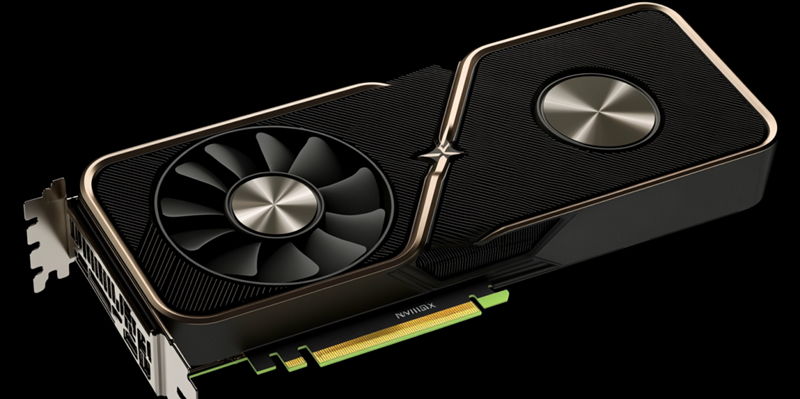The world of graphics processing units (GPUs) is on the brink of a significant shift as NVIDIA prepares to introduce its new GeForce RTX 50 "Blackwell" series GPUs. This launch marks a crucial transition for the company, signaling both an end and a beginning—the phasing out of the current RTX 40 "Ada" series and the emergence of next-generation technology. As these changes unfold, various stakeholders in the technology ecosystem, from gamers and tech enthusiasts to industry professionals, are keenly observing how this move will impact both the current product offerings and future advancements. NVIDIA’s meticulous planning and strategic approach to this transition promise a seamless shift, yet the industry is rife with curiosity and anticipation about what this new era will bring.
Transitioning Production: From RTX 40 to RTX 50
One of the most notable aspects of NVIDIA’s strategic plan is the company’s shift in production focus from the RTX 40 series to the upcoming RTX 50 series GPUs. This transition not only marks the closure of one chapter but also sets the stage for introducing a more advanced lineup. With the RTX 50 series, including models such as the RTX 5090, RTX 5080, and RTX 5070, NVIDIA aims to cater to the ever-increasing demands for higher performance and efficiency in various applications. Production lines that previously churned out RTX 40 GPUs are now being repurposed for the new generation, signaling the end lifecycle for the RTX 40 series. This deliberate shift in focus is indicative of NVIDIA’s commitment to staying ahead of the technological curve and meeting the market’s hunger for cutting-edge components.
The imminent unveiling of the RTX 50 series at CES in January further underscores this strategic move. Following the launch event, these new GPUs are expected to hit retail shelves, though some models might be released sequentially over a few weeks. This phased rollout ensures that NVIDIA can manage inventory levels effectively while addressing the initial demand surges that typically accompany such high-profile launches. Despite ceasing production of most RTX 40 models, NVIDIA plans to continue limited production for the entry-level AD106 and AD107 models. These models, particularly popular in budget segments and laptops, will still be manufactured temporarily, providing a clear indication of NVIDIA’s tactical approach to balancing market demands even amidst a major transition.
Clear Out and Clearance: Managing RTX 40 Inventory
As NVIDIA transitions to the RTX 50 series, the company has also initiated plans to phase out higher-end RTX 40 models. This process involves a comprehensive inventory clearance strategy, designed to make room for the incoming RTX 50 GPUs. Add-In Board partners (AIBs) are expected to play a pivotal role in this phase-out process, offering attractive discounts on current RTX 40 series GPUs to clear out existing inventory. These discounts will not only help in accelerating the clearance of older models but also provide consumers with an opportunity to purchase high-performance GPUs at reduced prices. It’s a win-win scenario—users get more affordable hardware, and AIBs and NVIDIA get to streamline their inventory and prepare for the new influx.
Furthermore, AIBs have already begun receiving engineering samples of the new RTX 50 GPUs, allowing them ample time to evaluate and test these advanced models. This early access ensures that both NVIDIA and its partners are well-prepared for the impending launch, providing a smooth transition for consumers and maintaining market stability. The engineering samples offer critical insights that help AIBs tailor their offerings, ensuring compatibility and performance standards are met right from the start. As the clearance of RTX 40 models progresses, it is evident that this strategic maneuvering is more than just a sale; it’s a synchronized effort to usher in a new generation of GPUs without causing disruptions or supply imbalances in the market.
Future Prospects and Industry Trends
The graphics processing unit (GPU) landscape is about to undergo a major transformation as NVIDIA gets ready to unveil its new GeForce RTX 50 "Blackwell" series GPUs. This launch signifies a significant transition for the company, marking an end to the current RTX 40 "Ada" series and the dawn of next-generation technology. Various stakeholders, from gamers and tech aficionados to industry experts, are closely monitoring how this shift will influence existing product lines and spur future innovations. NVIDIA’s well-thought-out planning and strategic execution ensure a smooth transition, but the tech world is abuzz with curiosity and anticipation for what this new chapter will bring. The forthcoming GeForce RTX 50 series is expected to deliver groundbreaking advancements in graphics performance, power efficiency, and AI capabilities, setting new benchmarks for the industry. As the RTX 40 series phases out, the arrival of the RTX 50 "Blackwell" series heralds both the continuation of NVIDIA’s legacy and the start of an exciting new era in GPU technology.

